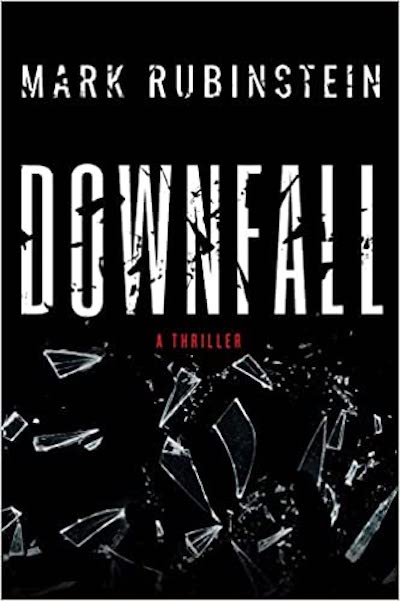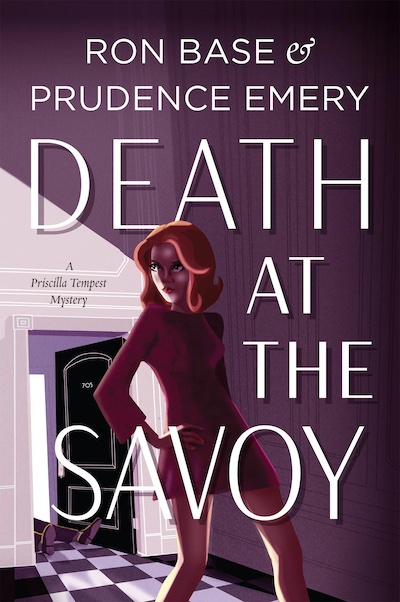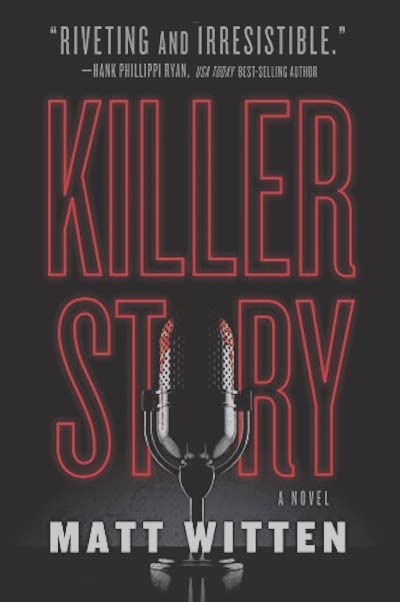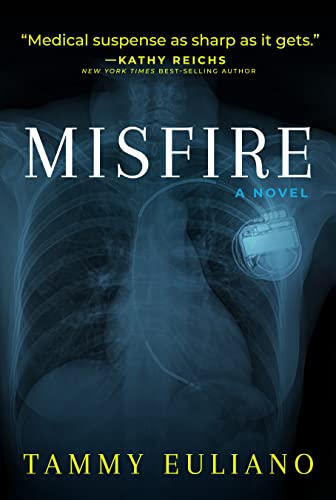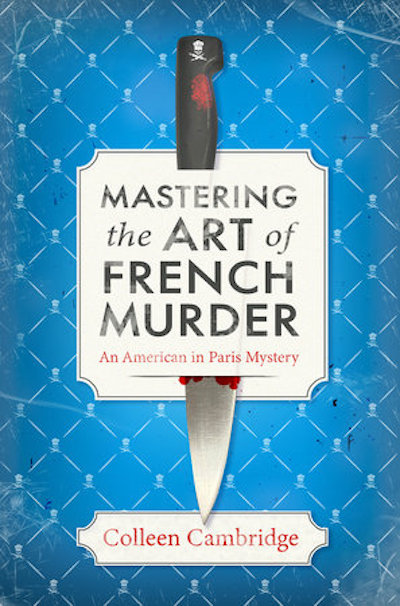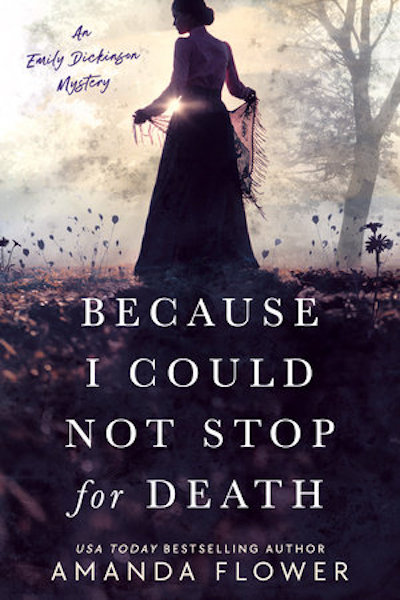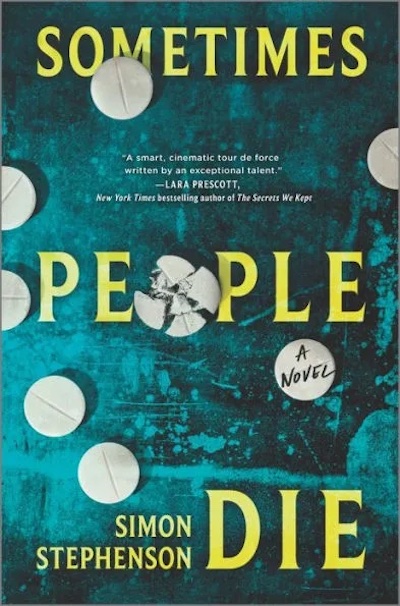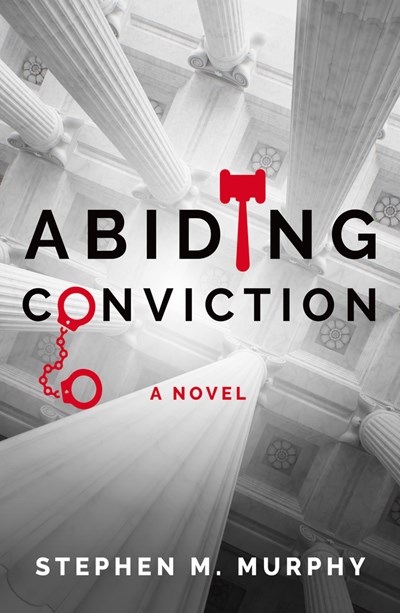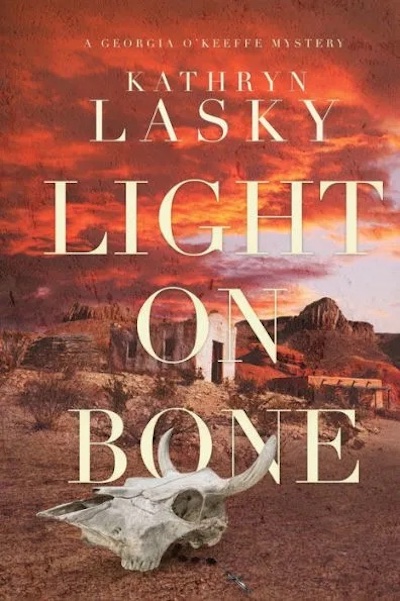Veteran NYPD Detective Art Nager and his newbie partner, Liz Callaghan, might have the makings of a cold case on their hands. Or two cold cases…nobody’s sure. Arriving at his Manhattan Upper East Side office, Dr. Rick Shepherd is stopped by police. Somebody’s been shot in the back, on the steps. When the victim is shown later on the news, Rick and his wife are shocked: he could be the doctor’s twin. In a lengthy, wryly funny scene, we see a jaded cop brush off the coincidence, but it doesn’t seem so random the next day when Rick’s father is also murdered, also shot in the back. The elder Dr. Shepherd was on a house call. But maybe it was more. Or could it be that a low-life whom Rick’s sister dated had enough of her family’s dislike? Perhaps a disgruntled patient? And is the second murder connected to the first, and to the creepy silent phone calls to Rick’s home? The detectives have their work cut out, and they portray the best of a police-procedural duo: camaraderie, doggedness in pursuit of the truth, and revelations of past relationships on and off the job. Narrator Nager’s growing feeling that this relationship could become more adds that something extra that makes this read comforting as well as a great puzzle. Did I mention the closing twist?
Amateur Sleuth
We’re in the mad, mod, mini-skirted world of London, 1968—the height of the swinging sixties. Where better to catch all the action than from a perch at the world-famous Savoy Hotel? Nowhere, unless you are young Priscilla Tempest, head of the Savoy’s press office, and arrive at work only to discover that your date from the previous night—Mr. Room 705—has been found quite dead. Odd, since when you left him he was a little too alive. Plus, it turns out that he’s a bit of an arms dealer, and not the caviar dealer he claimed. So begins Prudence’s crusade to clear her name, if not her reputation, keep her job, and maybe even stay alive. This book is outrageously funny, peppered throughout with all-too-realistic cameo appearances from the likes of Noël Coward, Richard Burton, Elizabeth Taylor, and even a member of the royal family. Add to the mix a Soviet spy, a louche but handsome reporter, a fanatical monarchist from Scotland Yard, a Spanish gigolo, and serve it all accompanied by a nice flute of Bucks Fizz—that’s what the British call a Mimosa. And who said you don’t learn from fiction? Anglophiles, lovers of comic crime fiction, and anyone in need of a break from the present day will adore this book. I’m off to The Carlyle for a Fizz myself, don’t bother ringing until Book 2 is out.
It’s great to have Matt Witten publishing crime fiction again. The author of one of my favorite series, the Jacob Burns mysteries, he returned to crime fiction last year with the riveting thriller The Necklace. Killer Story is in the thriller vein, and like The Necklace it provides the reader with plenty to dwell on instead of just rushing to the end—not that there’s anything wrong with that. Petra Kovach is a bright young journalist in a contracting industry. No sooner does she land a job than a year later she’s out the door, a victim of downsizing. It’s happening again, this time at the “Boston Clarion,” and to bide two more weeks she pitches her boss a true-crime podcast that would reopen the violent murder of super right-wing Olivia, a Harvard undergrad—and YouTuber—who had an enormous following. For Petra, this is personal. She was Olivia’s counselor at summer camp, and the two remained tight ever since, despite their political differences. But as Petra tracks down possible murderers, and as her audience grows by the thousands then the millions, she sheds first any journalistic ethics, then any ethics at all. Witten sustains the suspense, with the narrative just leaping ahead, chapter by chapter, while at the same time most readers will be wondering: does the end justify the means? And how far can Petra go? Perfect for fans of Dervla McTiernan and Hank Phillippi Ryan.
Romance? Check. Medical thriller? Check. Cozy? Mmm…sort of. This book has something for a range of readers, from those who like a second-chance romance to fans of Michael Crichton’s medical thrillers as well as readers who get a kick out of elderly relatives as sleuthing sidekicks. It stars Dr. Kate Downey, a young, widowed anesthesiologist (same profession as the author) who lives with her opinionated Aunt Irm. Irm has recently had an AICD implanted, an internal defibrillator that can shock the heart back to the right rhythm if necessary. (An author’s note explains that Dick Cheney had his AICD’s wireless capability disabled while he was Vice President so that nobody could control it and kill him.) At work, Kate sees a frightening pattern developing over a matter of days. Several AICD users have “misfires,” meaning that their device shocks them at just the wrong moment in a heartbeat, greatly endangering their lives. The suddenness and frequency of these issues seem suspect. As Kate rushes to protect Aunt Irm, she gains the help of a man she’s interested in, but is it too soon since her husband’s death, and what about her new love’s involvement in the business that makes the aberrant AICDs? Get ready for realistic and emotionally intertwined characters throughout this fast-moving tech puzzle; the shocking ending leaves much to ponder, making this a great choice for book clubs (discussion guide included)
Cambridge’s newest series has everything going for it. A magical setting: Paris awakening after World War II, with its fabled lights returning and food overflowing in the marketplaces. A great lead: sophisticated Tabitha Knight, who’s abandoned Detroit, and a dull fiancé, to live with her older French uncle and his longtime partner. Plus some star power: Tabitha’s buddy and neighbor, the young Julia Child, a student at Le Cordon Bleu who can always be found in her kitchen, stuffing some poor bird. Cambridge does a brilliant job capturing Julia with her quirky diction, fluty enunciation, and joie de vivre. But some of that joie flies out the window when a young woman is found dead in Julia’s basement; the murder weapon is a knife from Julia’s kitchen; and a note, in Tabitha’s handwriting, is found on the woman’s person. Tabitha—every bit the modern, independent woman—heads off to track down leads, break into the victim’s apartment, and befriend an American theater group, all the while drawing the ire—and maybe admiration?—of the taciturn, but so very handsome, Inspector Merveille. A first-rate traditional mystery with strong characterization that is certain to appeal to a broad readership, especially fans of Jacqueline Winspear, Rhys Bowen, and Cambridge’s own Phyllida Bright series.
A struggling photographer, twenty-something Liv Spyer is gifted with the powerful abilities to both observe and remember the world around her, gifts she needs if she ever wants to get out of her grandparent’s Greenwich Village brownstone, where she helps out in their key shop while carving out a tiny photography studio for herself in the basement. Finances are at an all time low—the holidays are approaching—when Liv crosses paths with Regina Montague, a prominent events photographer. After a little coercion, Liv convinces Regina to hire her and before you know it, she’s helping to photograph the social event of the season: the Holiday Debutante Ball. This is Liv’s big chance, until socially prominent Charlie Archibald interrupts the evening by being found dead in a pool of his blood, killed by a knife through an eyeball (yikes!). It doesn’t take much for Liv to decide to take on the case, and it’s a delight to follow her over Manhattan as she tries to piece together the puzzle, trusted camera in hand. While the plot can get super complicated, Brecher has done some great world building here—from Liv’s warm and loving Italian family to a possible boyfriend who may be an FBI agent—creating a world we’d be all too happy to return to again.
From Sir Francis Bacon and Eleanor Roosevelt to Walt Whitman and Queen Elizabeth, famous people often make excellent amateur detectives. This volume introduces Emily Dickinson as sleuth. Enigmatic and reclusive, an iconoclast and a feminist, Emily lived in America during a time of enormous change and unrest. One of this country’s greatest poets, Emily has fascinated generations—and Flower does a wonderful job of introducing the 25-year-old Emily, years before she withdraws from most social contact. Here we enter Emily’s world through her family’s new maid, Willa Noble, who soon strikes up a cautious friendship with the unusual Emily. When Willa’s brother Henry is killed in the town stables, Willa turns to her new friend for solace, and eventually help. She believes that Henry was murdered, and Emily is quick to join the investigation as the two are drawn out of women’s traditional spheres and into the dark underbelly of Amherst. The book is rife with references to class and race, abolition and the Underground Railroad, yet the author manages to avoid tropes such as that of the white savior. Flower is an accomplished mystery author who moves the story along at a perfect pace while immersing us in the complexities of Emily and her time. A gem for historical-mystery fans.
If you open this book thinking it’s a medical thriller—which is how it’s marketed—then you’ll be terribly disappointed. But take it on its own terms and it is one of the most evocative and heart-rendering tales you’ll have encountered in quite a while. A young Scottish doctor, caught stealing and using opioids, is deemed fit to return to practice and lands in St. Luke’s—one of London’s roughest hospitals and a place that’s desperately in need of staff. Author Stephenson was trained as a doctor, and this book goes deeply—and fascinatingly—into life in the hospital. Add to this a great cast of characters, including George, an orthopedist, rugby player, and teddy bear of a man who rooms with our protagonist, helping to keep him grounded. The criminal element comes into play when it’s discovered that several of St. Luke’s patients have died from opioid overdoses, clearly at the hands of medical personnel, with our narrator suspect number one. Woven throughout the book are the stories of doctors throughout history who doubled as serial killers—these sojourns away from the narrative will drive some readers crazy but I found the context they provided fascinating. In the end, the book comes down to just a few characters and a couple of questions: How does medicine, “a dark and a terrible knowledge,” force its practitioners to see things differently? And what’s the impact when they do see differently?
Manchester, NH judge Carlos Garcia is in an unexpected and uncomfortable spot: the defendant’s seat, accused of murdering his wife by adding an overdose of Vicodin to her dinner. In every way, he’s one of lawyer Dutch Francis’s least-favorite clients. The judge is not open to any advice, thinks he still has the upper hand in the courtroom, and is clearly withholding information about his wife’s death. Francis is already thinking he shouldn’t have taken this case when he gets two sharp shocks: his famous newscaster wife, Ginnie—they’ve been married a good five minutes—tells him she’s pregnant and not sure she wants to keep the baby, and, later that day, she goes missing. Francis believes she’s been kidnapped, a suspicion that’s borne out as he begins to receive oddities, such as her fingernail clippings, in the mail. The suspense is in high gear throughout this thriller as we follow the twists and turns of the courtroom drama and the chase when Francis hounds the cops to find his wife, but also joins his legal investigator on their own sometimes-scary bid to rescue Ginnie. A startling ending is in store, and getting there is an enjoyable trip through memorable characters, love-fueled desperation, and the exasperations of the justice system.
In real life, artist Georgia O’Keeffe began in 1929 to spend part of each year at Ghost Ranch in Abiquiú, New Mexico, and eventually moved there. When we join her at the ranch in 1934, she’s settled into an artistic rhythm in the desert landscape that so inspired her. O’Keeffe regularly drives into the desert to paint, enjoying a life that’s much looser than she lived with her rich, philandering husband back in New York. (In an amusing scene, the beat-of-her-own-drum-living O’Keeffe must genuinely have explained to her what a speed limit is.) On one of her excursions, the artist finds the vulture-attacked body of a priest, and the mystery only deepens when the man’s luggage contains decidedly unholy objects; it also has a map of the area with O’Keeffe’s house marked. As she investigates the strange man’s death, outsiders who visit Ghost Ranch, including Charles Lindbergh and his wife, Anne, add to the puzzles facing O’Keeffe. Neighbors’ lives, with their own difficulties, also feature prominently in the artist’s day-to-day life, with Lasky unobtrusively showing the twistedness of the Native’s subjugation. For example, white visitors who have spent their lives in this country have unfamiliar Native myths explained to them by reference to more familiar Greek myths and must be told not to take notes at a Native ceremony because “we are not museum artifacts.” While it’s apt for the time, the n-word features twice, and child sexual abuse is also a theme. Readers who enjoy this intriguing, emotional series debut could try another featuring celebrities: Erin Lindsey’s A Golden Grave, in which Nikola Tesla is a character; or for more New Mexico-set mysteries with a female sleuth, pick up Amanda Allen’s Santa Fe Revival series.

